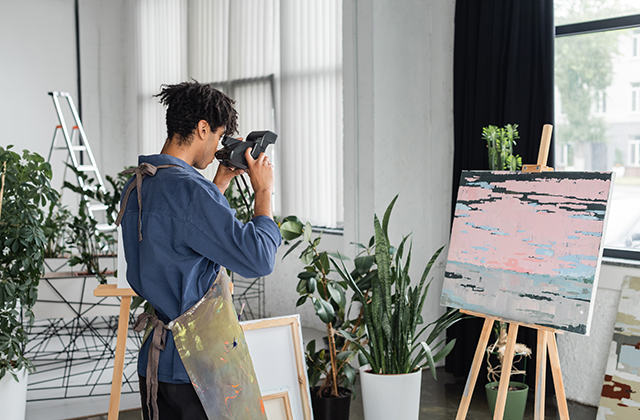
The Ultimate Guide to Storyboarding Software for Agency Artists
In the fast-paced world of creative agencies, where every second counts and deadlines loom, storyboard artists play a pivotal role in bringing concepts to life. Their ability to visually narrate a story before it hits the production stage is crucial for ensuring a seamless creative process. To enhance the efficiency and creativity of storyboard artists, choosing the right software is paramount. In this comprehensive guide, we delve into the world of storyboarding software, exploring the features and benefits that make them indispensable for agency artists.
Understanding the Needs of Storyboard Artists in Agencies
Storyboard artists working in agencies face unique challenges. They must collaborate with diverse teams, adapt quickly to evolving concepts, and deliver high-quality visuals under tight deadlines. The right storyboarding software can significantly ease these challenges and enhance the overall workflow. The keyword “storyboard artists” encapsulates the specific requirements of these professionals, highlighting the need for tools that cater to their creative and collaborative needs.
Intuitive Interface for Seamless Storytelling
One of the key aspects storyboard artists seek in software is an intuitive interface that allows for seamless storytelling. A software package that understands the language of artists and provides an easy-to-navigate canvas can boost productivity. Artists can focus on their creative process rather than wrestling with the tools. Look for features like drag-and-drop functionality, customizable shortcuts, and an overall user-friendly design that empowers storyboard artists to bring their visions to life effortlessly.
Collaborative Capabilities for Team Synergy
In agency environments, collaboration is the heartbeat of creativity. Storyboarding software that enables real-time collaboration is a game-changer for artists working in teams. Whether it’s simultaneous editing, comments, or version control, these collaborative features ensure that the entire creative team is on the same page. This is particularly vital for storyboard artists, as their work often serves as a foundation for other creative elements in the production pipeline.
Dynamic Drawing and Illustration Tools
Storyboard artists rely heavily on their drawing and illustration skills to convey emotions, actions, and transitions effectively. The ideal storyboarding software for agency artists should provide a comprehensive set of dynamic drawing and illustration tools. Look for features like pressure sensitivity, brush customization, and the ability to mimic traditional artistic techniques. These tools empower artists to create visually compelling storyboards that resonate with the intended audience.
Integration with Industry-Standard Formats and Software
Efficient collaboration often requires seamless integration with other tools and software used in the production pipeline. The chosen storyboarding software should support industry-standard formats and easily integrate with popular design and animation software. This ensures a smooth transition from storyboarding to the next phases of production, minimizing the risk of errors and streamlining the overall creative process for storyboard artists in agencies.
Storyboard Artists Keyword: Boosting Visibility and Opportunities
In the competitive landscape of the creative industry, storyboard artists must not only excel in their craft but also be discoverable by agencies seeking top-tier talent. Incorporating the keyword “storyboard artists” in your online portfolio, resume, and professional profiles can significantly boost your visibility. Agencies actively search for skilled storyboard artists, and optimizing your online presence with this keyword can open doors to exciting opportunities.
Cloud-Based Accessibility for Flexibility
The modern work environment often demands flexibility and remote collaboration. Cloud-based storyboarding software allows artists to access their work from anywhere with an internet connection. This flexibility is especially beneficial for agencies with teams spread across different locations or for artists who prefer a remote work setup. Cloud-based accessibility ensures that storyboard artists can contribute to projects seamlessly, irrespective of their physical location.
Storyboard Artists’ Toolkit: A Personalized Approach
Every storyboard artist has a unique style and approach to their work. The best storyboarding software allows for a personalized toolkit, enabling artists to customize their workspace and tools according to their preferences. This not only enhances comfort and efficiency but also contributes to the development of a distinctive artistic signature. A personalized toolkit empowers storyboard artists to express their creativity authentically.
Regular Updates and Customer Support
In the rapidly evolving landscape of creative software, regular updates are essential to stay current with industry trends and technological advancements. Opt for storyboarding software that is actively supported by the developers, ensuring that artists have access to the latest features and improvements. Additionally, responsive customer support is crucial for addressing any issues promptly, minimizing downtime for storyboard artists working on tight deadlines.
Conclusion: Elevating the Art of Storyboarding in Agencies
Storyboarding software is not just a tool; it’s a creative companion for artists in agencies. The right software can elevate the art of storytelling, enhance collaboration, and streamline the entire creative process. For storyboard artists, embracing a tool that understands and caters to their unique needs is the key to unlocking their full creative potential. As the demand for talented storyboard artists continues to grow, mastering the use of the right software becomes not only a professional advantage but a necessity in the competitive world of creative agencies. Choose wisely, customize your toolkit, and let your storyboards speak volumes in the dynamic and ever-evolving landscape of agency-driven creativity. If you are working in an art agency you will need to learn more from your experience collegues.